Author: The Editors
Sun and shade
3 August 2011 | Extracts, Non-fiction
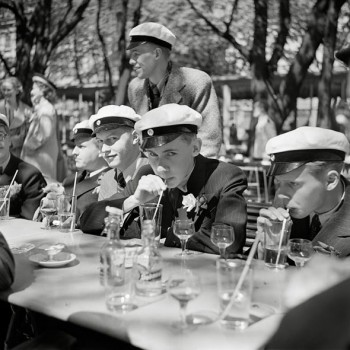
Springtime: the new graduates celebrate the beginning of summer. Photos: ©Jussi Brofeldt
Documentary film-making and photography arrived in Finland in the 1920s with pioneers like Heikki Aho and Björn Soldan, who founded a film company in 1925 in Helsinki. They also took thousands of photographs of their city; in a selection taken in the turbulent 1930s, people go on about their lives, rain or shine
Photographs from Aho & Soldan: Kaupunkilaiselämää – Stadsliv – City life. Näkymiä 1930-luvun Helsinkiin (‘Views of Helsinki of the 1930s’, WSOY, 2011)
Photos: Aho & Soldan@Jussi Brofeldt. Texts, by Jörn Donner and Ilkka Kippola, are published in Finnish, Swedish and English.
The exhibition ‘City life‘ is open at Virka Gallery of the Helsinki City Hall from 1 June to 4 September.
Aho and Soldan were half-brothers, Heikki the eldest son of the writer Juhani Aho (1861–1921; an extract from one of his novels is available here) and the artist Venny Soldan-Brofeldt. (Juhani Aho changed his original Swedish surname, Brofeldt, to Aho in 1907), Björn Soldan was Aho’s son from an extramarital relationship. More…
Best in show
30 June 2011 | This 'n' that
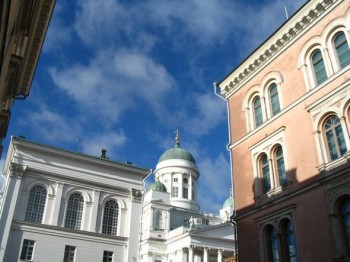
Cooler than we thought: Helsinki. Photo: Leena Lahti
So Helsinki has just come out top in Monocle magazine’s Quality of Life survey.
Monocle, which takes a determinedly internationalist and unfailingly style-conscious view of politics, business, culture and design, was founded by its editor Tyler Brûlé in 2007. As anyone who follows his weekly column in the Financial Times will know, Brûlé leads a peripatetic life that will have given him personal experience of most, if not all, of the 25 cities under Monocle’s lens in this survey.
Monocle’s preferences, as the top three cities on the list indicate – Helsinki is followed by Zurich and Copenhagen – is for small, well organised, forward-looking cities. Oh, and ones with good water pressure – his home town of London, which might otherwise have featured higher on the list, was debarred by its Victorian water system, which rules out the cheering experience of an energising shower before work in the morning.
So, on a list clearly based on the minutest of scrutiny, just what is it that makes life in Helsinki so different, so appealing?
According to the criteria used, ‘the world’s most liveable city’ boasts a low crime rate, good school system, excellent public transport and low unemployment – but where Helsinki really stands out, for Monocle, is in its continuous implementation of intelligent urban planning (large docklands in the city centre have been demolished, for example, and replaced by desirable new housing areas) and its dynamic, can-do, approach to doing business.
Oh, and the eating and food culture in the city is flourishing, as the ‘New Nordic Cuisine’ rules. And, Monocle being Monocle, the sheer physical beauty of the city will have played its part in earning it its accolade. More details are to be found in the current, July-August, issue of Monocle.
Much of this is certainly true. From a resident’s point of view, Helsinki’s street culture has been transformed in the past fifteen to twenty years. The transportation system is a delight, although one that Helsinki people tend to take for granted, with clean buses, trains and trams running, broadly speaking, on time, as is the education system, with the state providing excellent schools to the extent that private-sector education is practically non-existent.
As for what the ‘New Nordic Cuisine’ is exactly, this remains slightly elusive to your editors here at Books from Finland, although it clearly has to do with well-sourced, locally grown food and simple flavours. We do agree that the demise of the less-hip beer-drinking dens of yesteryear and the rise of well-lit cafés and restaurant with pleasant outdoor seating are indeed reality. Old greasy spoons are on the wane, definitely.
Oh yes: and there’s nothing wrong with Helsinki’s water pressure. Our morning showers are decidedly brisk and invigorating.
Oink oink
23 June 2011 | This 'n' that
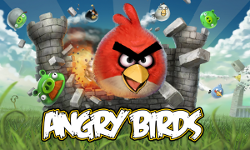 Naturally, here at Books from Finland, we’re keen to use the internet for serious (or not so serious) reading, but at the other end of the scale Finns are garnering considerable success in the world of smartphone games.
Naturally, here at Books from Finland, we’re keen to use the internet for serious (or not so serious) reading, but at the other end of the scale Finns are garnering considerable success in the world of smartphone games.
We don’t like to blow our collective trumpets, but it’s a little-known fact that the phone game Angry Birds, with birds and pigs in the starring roles, is actually Finnish, developed in 2009 by a company called Rovio. As the Helsinki freesheet Metro (31 May) notes, Angry Birds has been downloaded more than 200 million times on different devices since its launch in December 2009.
What is the secret of Angry Birds’ success? ‘I like it because it doesn’t really have any rules and you never know exactly what’s going to happen next,’ says our young reviewer Sophia, 9; her sister, Tia, 5, says ‘I like it because you get to shoot in it.’ To judge by the amount of time they spend playing Angry Birds, they like it a lot.
And how did Angry Birds come about? ‘At the beginning of 2009 our design group went through a number of different options,’ Rovio’s communications director Ville Heijari tells Metro. ‘One of them was angry-looking birds, and everyone fell in love with them right away.’ And what does Heijari himself like best about the game? ‘Definitely the fact that when you make a mistake, the pig laughs at you. That really makes you want to try again.’
In the pipeline is an Angry Birds movie, plus further development of the game itself. ‘So far the world has only seen an glimpse of the birds’ world,’ says Heijari.
By the way…
23 June 2011 | This 'n' that
To get Books from Finland delivered to you by e-mail, just click here and follow the instructions.
Face, book
23 June 2011 | Letter from the Editors

What are books made of? Picture: Wikipedia
‘The worst of all is if the writer forgets writing and starts turning out books.’
This thought is from the poet Vilja-Tuulia Huotarinen’s introductory talk at the Lahti International Writers’ Reunion (LIWRE), which took place at Messilä Manor between 19 and 22 June. ‘There’s too much talk of the stunting of the book’s lifespan and the economic life of the publishers,’ she continues. A writer ‘must not forget that he or she is responsible to the work of art, nobody else, not even the readers.’
Today, book publishers are responsible to capital and productivity, and a work of literature resembles a product with an invisible best-before marker. Is its life a couple of months, like ice cream? Books delivered to the shop in September are already old-hat in February, and are best put on sale. More…
Coming up…
23 June 2011 | This 'n' that
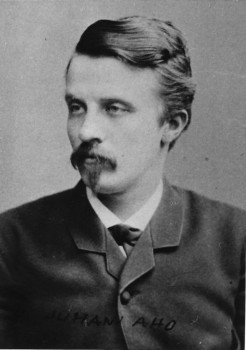
Juhani Aho. Photo: SKS/Literary archives
After having read Juhani Aho’s sensual novella Yksin (‘Alone’, 1890), set in Paris, composer Jean Sibelius threatened to challenge its author to a duel.
The yearned-for loved one in the novella resembled Sibelius’s fiancée Aino Järnefelt, for whom author and journalist Aho had nursed an unrequited passion. (No duel ensued after all.)
This year marks the 150th year since Aho’s birth. An early modernist, Aho (1861–1921) was a versatile writer whose narrative skills have made him a classic. We shall feature extracts from Yksin – in Herbert Lomas’s translation, first published in Books from Finland in 2006 – along with a reappraisal of Aho’s work in the early years of the 20th century by Professor Jyrki Nummi.
The books that sold in May
10 June 2011 | In the news
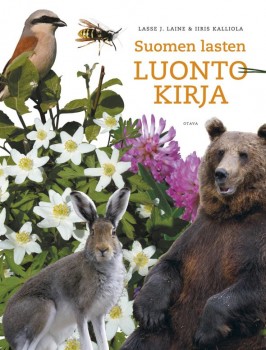 In May the Bookseller’s Association of Finland’s list of the best-selling Finnish fiction was still topped – as it was in March – by a collection of poems: Heli Laaksonen’s Peippo vei (‘The chaffinch took it’, Otava) is written in a local dialect spoken in south-western Finland. See our introduction to Laaksonen’s new poems.
In May the Bookseller’s Association of Finland’s list of the best-selling Finnish fiction was still topped – as it was in March – by a collection of poems: Heli Laaksonen’s Peippo vei (‘The chaffinch took it’, Otava) is written in a local dialect spoken in south-western Finland. See our introduction to Laaksonen’s new poems.
Pirjo Rissanen’s novel Äitienpäivä (‘Mother’s day’, Gummerus) was number two and Seppo Jokinen’s crime story, Ajomies (‘The driver’, Pulitzer/Crime Time) number three.
Tuomas Kyrö’s short prose about a grumpy old man resisting all sorts of contemporary fads, Mielensäpahoittaja (‘Taking offence’, WSOY), was number four.
Sofi Oksanen’s hugely successful novel about women and Estonian history, Puhdistus (WSOY, 2008) – English version: Purge –, still occupies number five on the list.
The most popular books for children and young people in May was the Finnish translation of a classic, Saint-Exupéry’s Le Petit Prince. A nature book for children, Suomen lasten luontokirja by Lasse J. Laine and Iiris Kalliola, was number two, and the cartoon kids Tatu and Patu occupied the third place (both published by Otava): Tatun ja Patun Suomi (‘Tatu and Patu’s Finland’), written and illustrated by Aino Havukainen and Sami Toivonen.
The translated fiction list was – as in March – topped by Maalattujen luolien maa (The Land of Painted Caves), by Jean M. Untinen-Auel, an American writer with Finnish roots. The novel is set in the late Paleolithic era.
On the non-fiction list there were books, in particular, on cooking, gardening, birds – and diets.
Jarkko Laine Prize 2011
1 June 2011 | In the news
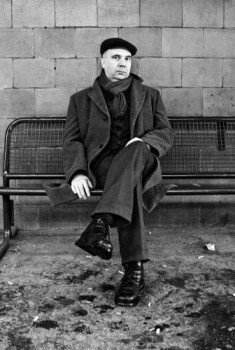
Juha Kulmala. Photo: Lotta Djupsund
The Jarkko Laine Literary Prize (see our news from 6 May), worth €10,000, was awarded to Juha Kulmala (born 1962) on 19 May for his collection of poems entitled Emme ole dodo (‘We are not dodo’, Savukeidas, 2009).
The prize is awarded to a ‘challenging new literary work’ published during the previous two years. Shortlisted were also two novels, Kristina Carlson’s Herra Darwinin puutarhuri (‘Mr Darwin’s gardener’, Otava, 2009) and Erik Wahlström’s Flugtämjaren (‘Fly tamer’, Finnish translation Kärpäsenkesyttäjä, Schildts, 2010).
Jarkko Laine (1947–2006) was a poet, writer, playwright, translator, long-time editor of the literary journal Parnasso and chair of the Finnish Writers’s Union.
Tove Jansson meets Lewis Carroll
27 May 2011 | In the news
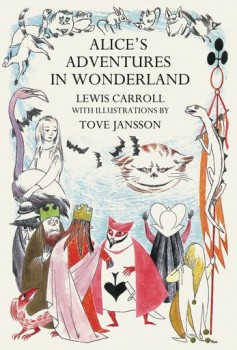 The British art museum Tate has recently reprinted two of Lewis Carroll’s books with illustrations by Tove Jansson, artist, writer and creator of the Moomins.
The British art museum Tate has recently reprinted two of Lewis Carroll’s books with illustrations by Tove Jansson, artist, writer and creator of the Moomins.
Tove Jansson (1914–2001) had begun to write and illustrate her Moomin stories for children in the late 1940s. In 1959 she was commissioned to illustrate the Swedish-language translation of Lewis Carroll’s The Hunting of the Snark (1874), about an ‘inconceivable creature’, the Snark, for the Finland-Swedish publisher Schildts.
After illustrating The Hobbit by J.R.R. Tolkien in 1962, Jansson then took on Carroll’s best-known book, Alice‘s Adventures in Wonderland, which was published in 1966 (see the pictures here).
The English-language original of Alice with her illustrations was then published in 1977 by Delacorte Press. Tate has now made Tove Jansson’s witty, perceptive visions of Alice available again, while the Snark with her original illustrations has now been printed in English for the first time.
Writers’ talk
13 May 2011 | In the news
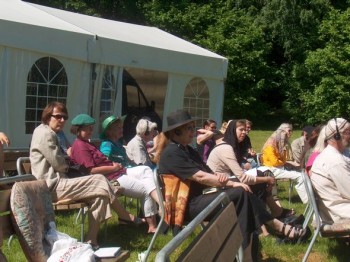
Under the midday sun: participants of the Writers' Reunion in 2005
Next month sees a new International Writers’ Reunion at Messilä Manor in the city of Lahti in central Finland. The first such meeting was organised in 1963.
Since then, more than a thousand writers, translators, journalists, critics and other book people, Finnish and foreign, have met for a few days every other year just before Midsummer to discuss various topics.
And the nights are light, and long, and the talking goes on.
This time the theme is ‘The writer beyond words’: how will the writer meet the limits of language and narration? (More on the topic in our article Beyond words.) The meeting takes place between 19 and 21 June.
So far about twenty writers, from Canada, Czech Republic, Denmark, Estonia, France, Germany, Great Britain, Ireland, Lithuania, Norway, Russia, Slovenia, Sweden and Udmurtia, are expected to arrive, as are some 20 Finnish participants. All debates and poetry evenings are open to the general public free of charge.
Best Translated Book Award 2011
13 May 2011 | In the news
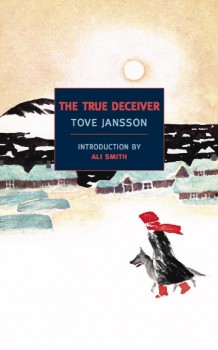 Thomas Teal’s translation from Swedish into English of Tove Jansson’s novel Den ärliga bedragaren (Schildts, 1982), entitled The True Deceiver (published by New York Review Books, 2009), won the 2011 Best Translated Book Award in fiction (worth $5,000; supported by Amazon.com). The winning titles and translators for this year’s awards were announced on 29 April in New York City as part of the PEN World Voices Festival.
Thomas Teal’s translation from Swedish into English of Tove Jansson’s novel Den ärliga bedragaren (Schildts, 1982), entitled The True Deceiver (published by New York Review Books, 2009), won the 2011 Best Translated Book Award in fiction (worth $5,000; supported by Amazon.com). The winning titles and translators for this year’s awards were announced on 29 April in New York City as part of the PEN World Voices Festival.
Organised by Three percent (the link features a YouTube recording from the award ceremony, introducing the translator, Thomas Teal [fast-forward to 7.30 minutes]) at the University of Rochester, and judged by a board of literary professionals, the Best Translated Book Award is ‘the only prize of its kind to honour the best original works of international literature and poetry published in the US over the previous year’. ‘Subtle, engaging and disquieting, The True Deceiver is a masterful study in opposition and confrontation’, said the jury.
Tove Jansson (1914–2001), mother of the Moomintrolls, story-teller and illustrator of children’s books, translated into 40 languages, began to write novels and short stories for adults in her later years. Psychologically sharp studies of relationships, they are written with cool understatement and perception.
Quality writing will work its way into a wider knowledge (i.e. a bigger language and readership) eventually… even though occasionally it may seem difficult to know where exactly it comes from; in a review published in the London Guardian newspaper, the eminent writer Ursula K. Le Guin assumed Tove Jansson was Swedish.
New literary prize
6 May 2011 | In the news
A new literary prize was founded in 2010 by an association bearing the name of Jarkko Laine (1947–2006) – poet, writer, playwright, translator, long-time editor of the literary journal Parnasso and chair of the Finnish Writers’s Union.
The Jarkko Laine Literary Prize will be awarded to a ‘challenging new literary work’ published during the previous two years. The jury, of nine members, will announce the winner on 19 May.
The shortlist for the first prize is made of Kristina Carlson’s novel Herra Darwinin puutarhuri (‘Mr Darwin’s gardener’, Otava, 2009), Juha Kulmala’s collection of poems, Emme ole dodo (‘We are not dodo’, Savukeidas, 2009) and Erik Wahlström’s novel Flugtämjaren (‘Fly tamer’, Finnish translation Kärpäsenkesyttäjä, Schildts, 2010).
The prize money, €10,000, comes jointly from the publishing houses Otava, Otavamedia and WSOY, the Haavikko Foundation, the City of Turku and the University of Turku.
Funny stuff favoured
13 April 2011 | In the news
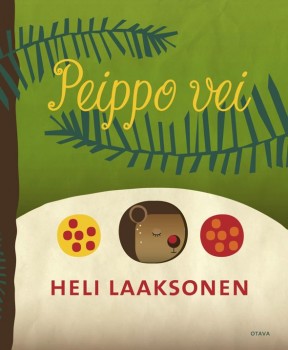 In March the Bookseller’s Association of Finland’s list of the best-selling Finnish fiction was topped – for a change – by a collection of poems. Like all her collections, Heli Laaksonen’s Peippo vei (‘The chaffinch took it’, Otava) is written in a local dialect spoken in south-western Finland.
In March the Bookseller’s Association of Finland’s list of the best-selling Finnish fiction was topped – for a change – by a collection of poems. Like all her collections, Heli Laaksonen’s Peippo vei (‘The chaffinch took it’, Otava) is written in a local dialect spoken in south-western Finland.
Perttti Jarla’s latest comics book, Fingerpori 4 (‘Fingerborg 4’, Arktinen Banaani) was number two – and, demonstrating the Finns’ love of cartoons and comics, another of his titles, Fingerpori book, Fingerpori – Kamppailuni (‘Fingerborg – My fight’) occupied fourth place, following Sofi Oksanen’s Puhdistus (Purge), published in 2008 and still number three on the list. More…
What do YOU think?
8 April 2011 | This 'n' that
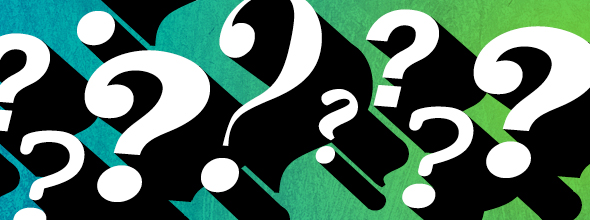
Illustration: Joonas Väänänen
Dear Reader:
we would love to know what you think about Books from Finland and what it means to you.
You can of course always send us suggestions and comments – interactivity is one of the great bonuses of being online – but we’d like to ask you some specific questions so that we can build up a picture of who reads our website, as well as your likes and dislikes.
We’ll start now, posting a question each month – see the sidebar on our main page. Please participate!
The Editors
New members of the board
8 April 2011 | In the news
Two new members joined Books from Finland‘s Editorial Board in March: Mervi Kantokorpi and Pia Ingström replaced Nina Paavolainen and Tiia Strandén (who both joined the ranks of FILI – the Finnish Literature Exchange in February).
Mervi Kantokorpi is a freelance literary critic and scholar who specialises in Finnish fiction, both prose and poetry. Pia Ingström works as a literary editor at the Swedish-language Hufvudstadsbladet newspaper; her autobiographical book, Inte utan min mamma (‘Not without my mother’, Finnish translation: Äitiä ikävä, Schildts), was published last year.
